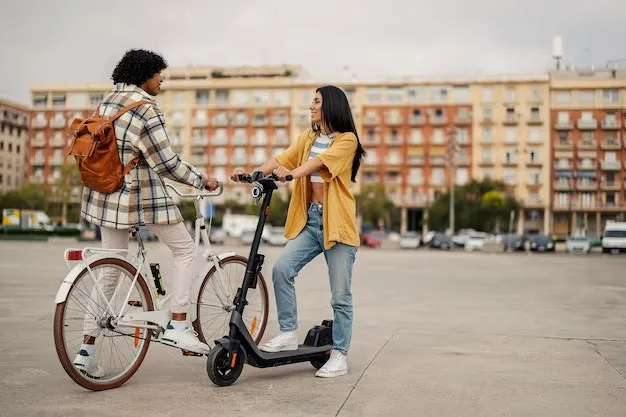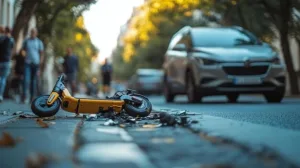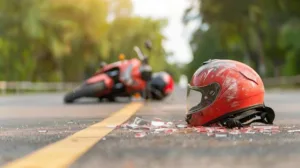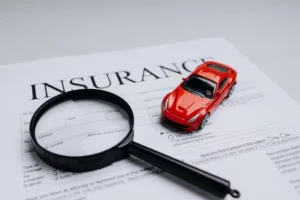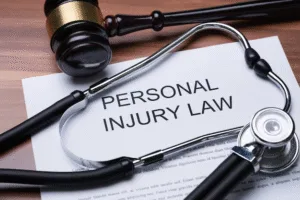Scooters and city bikes have become a popular way to get around Miami’s vibrant cities. They are convenient, eco-friendly, and perfect for short commutes or leisure rides. However, with increasing traffic and unpredictable weather, safety becomes a crucial concern for every rider.
According to experts at Accident Medical Group, many scooter and city bike accidents in Miami occur due to lack of awareness and simple safety oversights. Understanding the right precautions can greatly reduce these risks and make every ride safer.
This guide highlights essential safety tips for scooter and city bike riders in Miami, covering important topics such as helmet use, traffic rules, visibility, and maintenance checks. Whether you’re a first-time rider or a regular commuter, following these practices will help you stay safe on the road.
Why Safety Matters for Scooter and City Bike Riders
Miami’s roads are shared by thousands of cyclists, scooter users, and motorists daily. Unfortunately, the state also reports one of the highest rates of bicycle and scooter-related accidents in the country.
Common causes of these incidents include distracted driving, low visibility, and poor vehicle maintenance. Understanding how to prevent these risks can protect both riders and pedestrians.
Always Wear a Helmet
Wearing a helmet is one of the simplest and most effective ways to prevent serious head injuries. Even a minor fall can result in significant trauma without proper protection.
Why Helmet Use Is Important
- Reduces head injury risk: A helmet can lessen the impact of falls or collisions.
- Required by law for minors: Miami law mandates helmet use for riders under 16.
- Increases visibility: Reflective helmets make riders more noticeable to drivers.
Selecting a high-quality, well-fitting helmet is key. Replace it after any impact or once it shows signs of wear.
Follow Miami’s Traffic Rules
Adhering to traffic rules ensures safety for both riders and motorists. In Miami, scooter and city bike users are expected to follow the same road laws as drivers.
Key Traffic Guidelines
- Use bike lanes: Stay in designated bike or scooter lanes when available.
- Obey traffic signals: Stop at red lights and yield at stop signs.
- Signal your movements: Use clear hand signals before turning or changing lanes.
- Yield to pedestrians: Always allow pedestrians to cross safely at intersections.
Being predictable on the road helps drivers anticipate your actions, reducing the risk of accidents. For more on legal rights after accidents, see City Bike Accident page.
Make Yourself Visible
One of the biggest risks for scooter and city bike riders is not being seen by drivers. Enhancing your visibility is an easy and effective way to prevent collisions.
Visibility Tips
- Wear bright clothing: Choose neon or reflective colors, especially during low-light hours.
- Install lights: Equip your scooter or bike with front and rear lights.
- Add reflective accessories: Use reflective strips on your helmet, shoes, or backpack.
- Avoid blind spots: Position yourself where drivers can easily see you.
Being visible gives drivers more time to react, especially in Miami’s busy city streets.
Perform Regular Maintenance Checks
Regular maintenance checks can prevent mechanical issues that lead to accidents. Even small problems, like a loose brake or worn tire, can make a big difference in safety.
Pre-Ride Safety Checklist
- Tires: Check for proper inflation and inspect for damage.
- Brakes: Ensure both brakes engage smoothly.
- Lights and reflectors: Make sure all lights are functional and clean.
- Chain or motor: Lubricate the chain or check motor connections for electric scooters.
- Handlebars and seat: Tighten loose parts before riding.
A quick inspection before every ride helps ensure a safe and trouble-free journey.
Stay Alert in Traffic
Miami’s city roads can get crowded, especially during rush hours. Scooters and city bikes must navigate through cars, buses, and pedestrians, making attentiveness crucial.
Tips for Riding in Busy Areas
- Keep your focus: Avoid distractions like phone use or headphones.
- Maintain distance: Leave enough space between your vehicle and others.
- Watch for car doors: Stay clear of parked vehicles where doors may suddenly open.
- Use mirrors if possible: A small mirror helps you monitor traffic behind you.
Awareness and defensive riding can prevent accidents in congested areas. Riders can also learn more about handling collisions and injuries from scooter accident resources.
Be Cautious During Poor Weather
Miami’s sudden rain showers and tropical storms can make roads slippery and reduce visibility. Riders should adapt to changing weather conditions to stay safe.
Weather Safety Advice
- Avoid riding in heavy rain: Wet roads make braking and maneuvering difficult.
- Use appropriate tires: Wider tires provide better traction in wet conditions.
- Slow down: Ride at a moderate speed to maintain control.
- Dry your brakes: After rain, test your brakes gently to ensure they’re responsive.
Being cautious during bad weather can help prevent skidding and loss of control.
Be Extra Careful at Intersections
Intersections are among the most dangerous spots for riders. Many crashes occur when drivers fail to yield or misjudge a rider’s speed.
Intersection Safety Tips
- Stay visible: Position yourself where drivers can clearly see you.
- Make eye contact: Confirm that drivers notice you before crossing.
- Signal early: Indicate turns or lane changes well in advance.
- Avoid rushing: Wait for a clear path before proceeding.
Taking your time and remaining predictable at intersections can reduce the likelihood of collisions.
Know What to Do After an Accident
Even careful riders can experience accidents. Knowing how to handle the situation ensures proper care and documentation.
Immediate Steps
- Check for injuries: Assess yourself and others for harm and seek medical attention if needed.
- Call the authorities: File a police report for official documentation.
- Gather evidence: Take photos of the scene, vehicles, and visible injuries.
- Exchange details: Share contact and insurance information with other parties.
- Notify your insurer: Report the incident as soon as possible.
Understanding post-accident procedures can make recovery and claims easier.
Commit to Safe Riding
Scooter and city bike riding in Miami is enjoyable and efficient, but safety must always come first. By practicing proper helmet use, following traffic rules, improving visibility, and performing regular maintenance checks, riders can reduce their risk of accidents.
Being cautious, alert, and responsible ensures that every ride remains safe and enjoyable.
If you’ve been involved in a scooter or city bike accident and need professional guidance or medical evaluation, visit Accident Medical Group.
Frequently Asked Questions
Do I need to wear a helmet while riding a scooter or city bike in Miami?
Yes. Miami law requires riders under 16 to wear helmets, but all riders are strongly encouraged to do so. Helmets protect against severe head injuries and increase visibility on the road.
Are scooters and city bikes allowed on sidewalks in Miami?
Rules vary by location. In most areas, scooters and city bikes must use bike lanes or roadways. When permitted on sidewalks, riders should move slowly and yield to pedestrians.
What are the most common causes of scooter and city bike accidents?
Accidents often result from distracted driving, poor visibility, and failure to follow traffic rules. Regular maintenance and adherence to safety practices can help prevent these incidents.
How can I make myself more visible to other drivers?
Wearing reflective clothing, using front and rear lights, and avoiding vehicle blind spots can improve visibility. Visibility is key to preventing collisions, especially in low-light conditions.
What should I do if I’m injured in a city bike or scooter accident?
You should seek medical care immediately and report the accident to the police. Keeping records of the incident and your injuries will help protect your rights if a claim becomes necessary.

